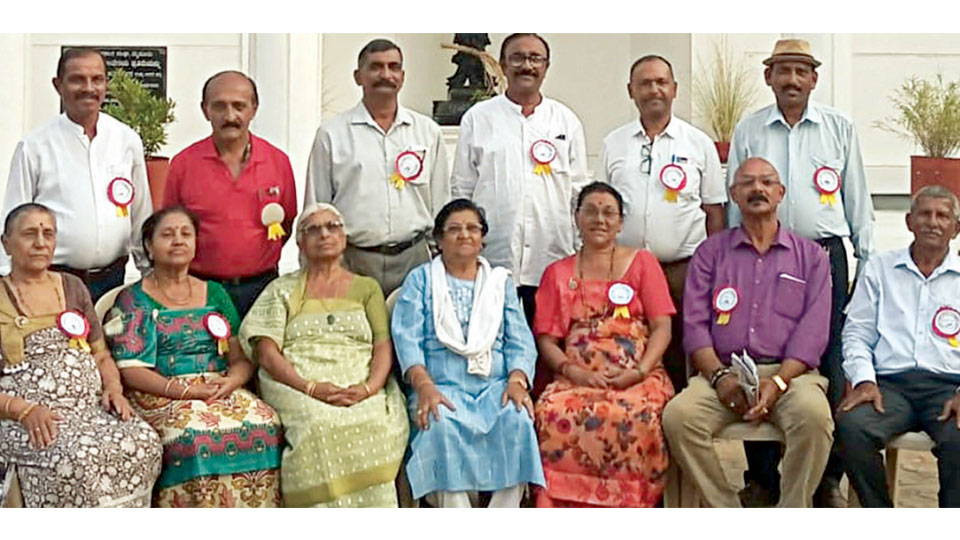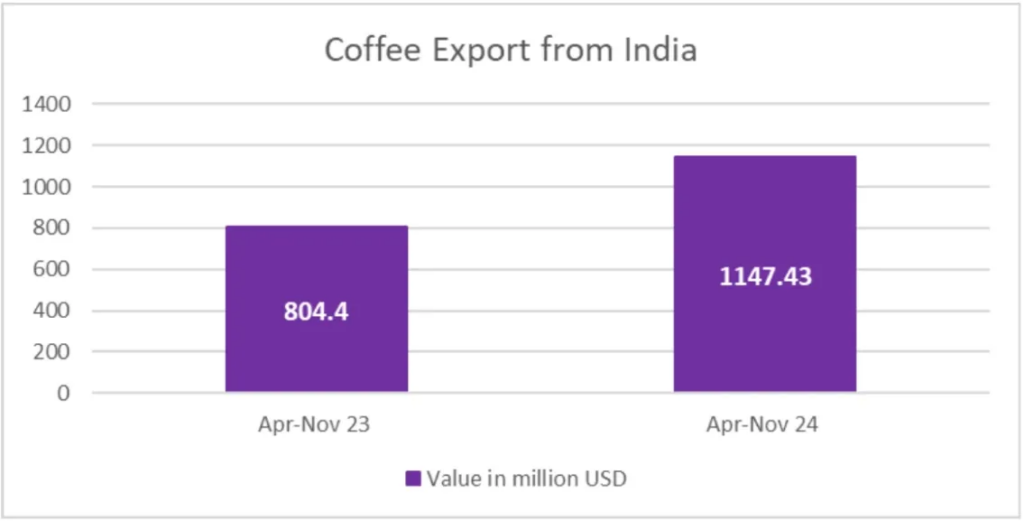28 e
28 d
28 c
28 b
28 a
Coffee Bean & Tea Leaf Looks to New Master Franchisee for Growth Restart
7 plantation homestays where the air is heady with fresh coffee, wild spices, and mountain mist
New Directors elected for Kodagu Sahakara Sangha

Mysuru:
The new Directors of Kodagu Sahakara Sangha, Jayalakshmipuram, were elected yesterday.
Among the total of 13 directors, two were reserved for women for which Nanjamma and Nirmala were elected unopposed.
For the remaining 11 posts, a total of 14 candidates had contested. Among them, K.G. Sudhir and A.A. Pemmaiah secured 88 votes each. Finally, K.G. Sudhir was elected through draw of lottery.
Others who were elected are M.K. Prakash (127 votes), Lovely Appaiah (119 votes), P.U. Girish (118 votes), M.G. Devaiah (108 votes), Byretira K. Ganapathy (108 votes), K.P. Pemmaiah (105 votes), P.K. Biddappa (96 votes), K.K. Bollamma (95 votes), K. Kavya Kuttappa (95 votes) and M.P. Belliappa (94 votes).
source: http://www.starofmysore.com / Star of Mysore / Home> News / February 23rd, 2025
Can India brew its way to becoming the world’s top coffee exporter?
SUMMARY
In the first few months of FY25, Indian coffee exports surpassed the $1 billion mark, registering an impressive 42.65% YoY growth. India’s diverse coffee regions, high-quality beans and unique farming techniques are increasingly filling gaps traditionally dominated by Brazil, Vietnam, Ethiopia and Colombia. However, strict EU deforestation rules pose challenges for small farmers due to high compliance costs.

India is the fifth-largest coffee exporter in the world. | Image: Shutterstock
A curious question—Are you team chai or coffee?
I’m team coffee by all means! A cup of steaming hot coffee is all I need to kickstart my day!
And not just me, lately the world is waking up to Indian coffee. For context, India’s coffee industry has achieved a significant milestone, with exports surpassing the $1 billion mark for the first time. Between April and November 2024, India’s coffee exports rose to a record high of $1.15 billion compared to $804.4 million during the same period last year, registering an impressive 42.65% growth.

Source: Department of Commerce
Seeing this remarkable growth, it is clear that India is redefining its traditional tea-dominated narrative by emerging as a strong global coffee exporter.
Sounds amazing, isn’t it? So, what’s brewing up India’s coffee exports?
Key markets driving growth
India exports coffee to more than 50 countries around the world. However, the major markets driving India’s coffee exports are Italy, Germany, Russia, UAE, Belgium and Turkey.

Source: Coffee Board of India
India is the world’s seventh-largest coffee producer. It is also the fifth-largest coffee exporter, exporting 403,051 tonnes of coffee between January and December 2024. On average, India exports over 70% of its production.
What is pushing India’s coffee exports?
Various reasons contribute to India becoming a key player in the global coffee market.
Firstly, major coffee-producing countries like Brazil and Vietnam are facing supply constraints due to erratic weather patterns—droughts and extreme heat—caused by climate change. With these giants struggling to meet the demands, India is creating enormous opportunities to step in and fill the gap.
Secondly, Indian coffee has a uniqueness that puts it ahead of its global competitors. It is grown using traditional techniques in natural forests. Interestingly, we are the only country in the world where coffee is grown under natural shade. Moreover, it is uniquely hand-picked without the use of machinery, naturally harvested and sun-dried. While the sun-drying method takes much longer than mechanical drying, it enhances the flavour of the beans. Besides, it is also eco-friendly as it does not contribute to carbon emissions.
Thirdly, coffee farming in other countries often involves chopping off existing vegetation, whereas in India, the forest canopy stays almost intact. This environmentally sustainable way of cultivating coffee aligns perfectly with the European Union’s Deforestation Regulation (EUDR), which prohibits coffee imports from regions that were deforested after 2020. This presents opportunities for Indian exporters.
Now you know the real reasons why Indian coffee typically commands a premium over the global benchmark!
The world looks to India for coffee
India mainly produces two varieties of coffee, Arabica and Robusta. While Arabica coffee has a mild aromatic flavour, Robusta coffee has a strong flavour on the taste buds.
FYI: India’s Robusta coffee is considered the best in the world, and its Arabica coffee is the second best, just after Columbia’s.
India primarily focuses on producing Robusta coffee, which accounts for 72% of India’s total production. Robusta coffee has a huge demand in the international markets, which is another reason for the surge in India’s coffee exports.
Did you know? India is considered the fifth-largest producer of Robusta coffee globally.
Not just this, Robusta beans are a favourite for instant coffee manufacturers worldwide. The rising demand for instant coffee in markets like Russia and Turkey has given a significant boost to India’s instant coffee exports, which make up a third of our total exports.
Besides, supply constraints in Brazil and Vietnam have led to a sharp rise in Robusta coffee prices. The prices have touched multi-decade highs, climbing more than 60% in 2024 alone. For context, Indian Robusta is fetching a premium of nearly $300 a tonne on the London-based ICE Futures Europe market. The surge in demand and prices presents Indian coffee exporters with a unique opportunity.
There is also a bitter reality to it
While Indian coffees are making a mark globally, let’s also accept the fact that the journey is not all that smooth.
Even though global prices are rising, coffee farmers are facing higher production costs due to rising labour costs and scarcity of labour. To put things in perspective, the labour cost in India is a massive 65%, whereas in Brazil it is just 25% of the total production cost. Why you ask? Well, it’s simply because the cultivation process is manual in our country.
Another challenge is growing climate changes and erratic rainfall patterns that severely harm the quality and yield of coffee and interfere with the sun-drying process.
That’s not all!
The EUDR compliance burden is putting extra pressure on farmers who will now need costly technological upgrades and struggle with heaps of paperwork, certifications and audits to meet the compliance requirements.
Having said that, the Coffee Board of India is developing a platform to help coffee producers in India comply with EUDR. While it will take some time to roll out, we might face some time-being challenges in exporting coffee to the EU.
So yeah, there are some challenges that we need to work on before India can climb the ranks to become a top coffee-exporting country.
The bottom line
Looking at the brighter side, India’s diverse coffee regions, high-quality beans and unique production process are increasingly filling gaps traditionally dominated by Brazil, Vietnam, Ethiopia, and Colombia.
By 2032, the Indian coffee market is projected to reach $1,227.47 million, which is huge!
As demand for Indian coffee increases, it’s clear that the Indian coffee industry’s future is bright and full of flavour!
Cheers team coffee!
source: http://www.upstox.com / Upstox / Home> News> Upstox Originals / by Namita Salgiya / February 22nd, 2025

